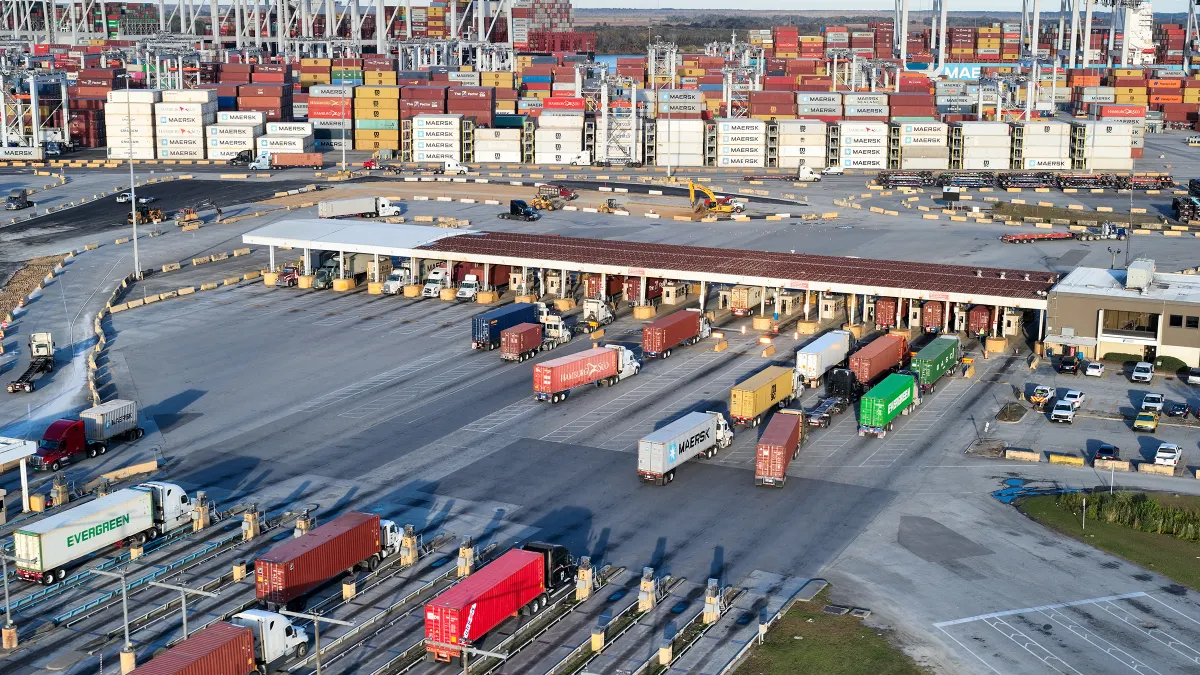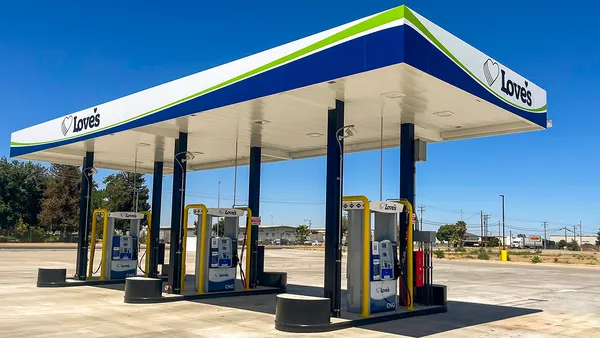Dive Brief:
- The Georgia Ports Authority rolled out a mobile application to help speed up supply chain velocity when truckers go through the Port of Savannah, according to a May 22 press release.
- The app can help drivers save drive time as it intends to simplify paperwork. Drivers can also get notifications, such as changes to gate hours, to help plan the day, per the release.
- Other functions of the app include an improved PIN process for tracking container movements and informs drivers of the nearest terminal entry gate. Future updates include navigation assistance through Waze or Apple Maps to help locate containers on the terminal.
Dive Insight:
Improving the port experience for truckers is beneficial to both drivers and shippers.
“Helping truckers solve problems before they arrive at our gates improves overall efficiency for them and for the cargo owners who choose Georgia Ports,” GPA President and CEO Griff Lynch said in the release.
When truckers manage cargo at the Garden City Terminal, truck turn times can average 35 minutes for a single move and 53 minute for dual moves if a driver delivers exports and picks up an import.
Lynch said drivers can make “six to eight turns a day for deliveries to local warehouses and still be home for dinner with their families.” This type of supply chain velocity can create a financial benefit for cargo owners’ inventory carrying costs.
The use of mobile apps at ports for truckers is still a developing trend in the industry. Stakeholders can already interface for appointment scheduling with any port or terminal via a dashboard or at a dispatch level.
But there are still some challenges for the technology to grow, Paul Brashier, VP of global supply chain at ITS Logistics, told Trucking Dive.
Some of those challenges are investments costs for the folks who manage terminals at the ports to get the apps up and running as well as the myriad of security concerns, Brashier said in an interview.
“I think that's probably the biggest two delays on it and we definitely saw an increase in investment in this post-COVID congestion period,” he added.













